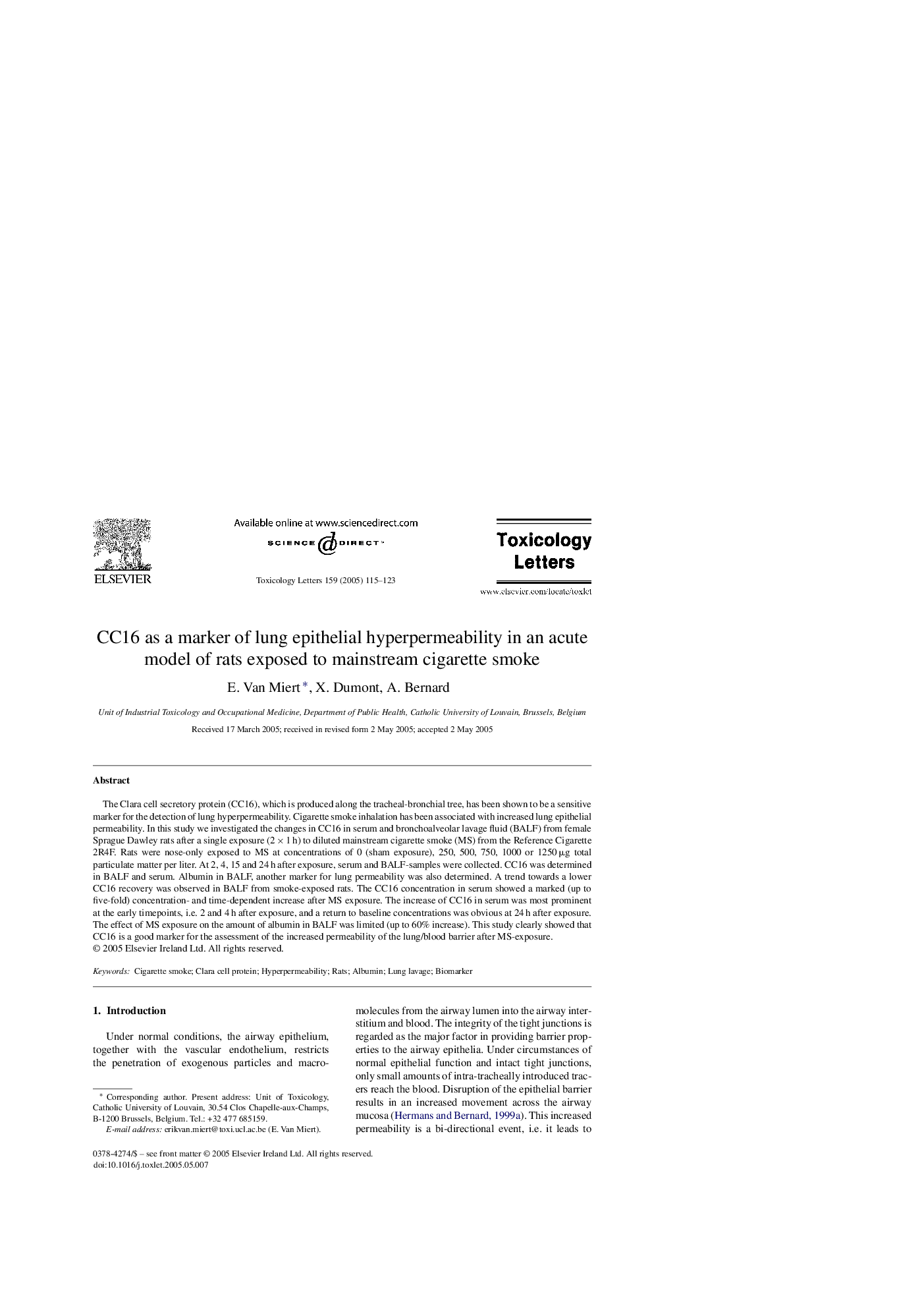| Article ID | Journal | Published Year | Pages | File Type |
|---|---|---|---|---|
| 9037352 | Toxicology Letters | 2005 | 9 Pages |
Abstract
The Clara cell secretory protein (CC16), which is produced along the tracheal-bronchial tree, has been shown to be a sensitive marker for the detection of lung hyperpermeability. Cigarette smoke inhalation has been associated with increased lung epithelial permeability. In this study we investigated the changes in CC16 in serum and bronchoalveolar lavage fluid (BALF) from female Sprague Dawley rats after a single exposure (2 Ã 1 h) to diluted mainstream cigarette smoke (MS) from the Reference Cigarette 2R4F. Rats were nose-only exposed to MS at concentrations of 0 (sham exposure), 250, 500, 750, 1000 or 1250 μg total particulate matter per liter. At 2, 4, 15 and 24 h after exposure, serum and BALF-samples were collected. CC16 was determined in BALF and serum. Albumin in BALF, another marker for lung permeability was also determined. A trend towards a lower CC16 recovery was observed in BALF from smoke-exposed rats. The CC16 concentration in serum showed a marked (up to five-fold) concentration- and time-dependent increase after MS exposure. The increase of CC16 in serum was most prominent at the early timepoints, i.e. 2 and 4 h after exposure, and a return to baseline concentrations was obvious at 24 h after exposure. The effect of MS exposure on the amount of albumin in BALF was limited (up to 60% increase). This study clearly showed that CC16 is a good marker for the assessment of the increased permeability of the lung/blood barrier after MS-exposure.
Related Topics
Life Sciences
Environmental Science
Health, Toxicology and Mutagenesis
Authors
E. Van Miert, X. Dumont, A. Bernard,
